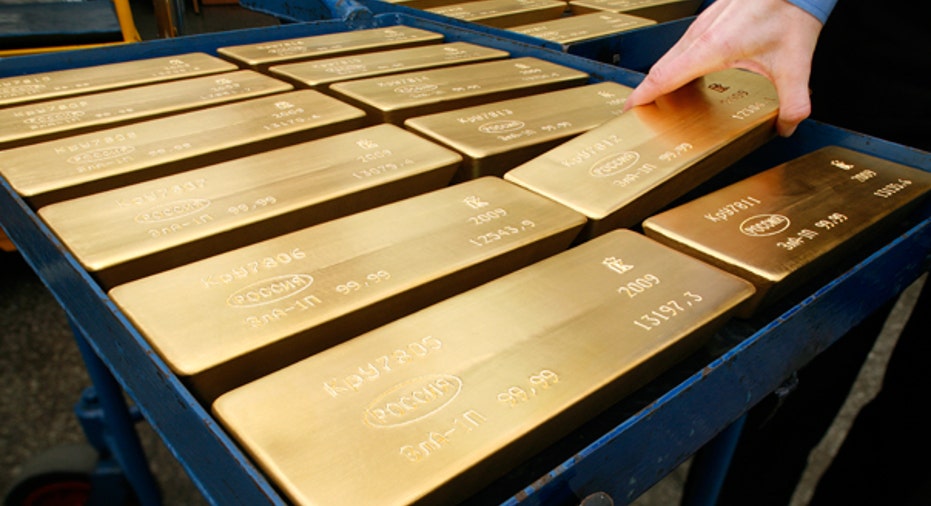U-Turn: Gold Slumps After Rally

Gold prices fell on Friday, with buyers cashing in gains after an earlier rally failed to take the precious metal above the previous session's high, with selling accelerating as it slid below a key chart level at $1,661 an ounce.
The precious metal slid back below its 200-day moving average after breaking above it on Thursday after the European Central Bank gave no indication following a policy meeting it would cut rates, prompting a rally in the euro.
The metal struggled to maintain those gains on Friday, however, despite a further rise in the single currency, as the markets worried that the previous day's 1 percent rise had been overdone.
"We shouldn't have been up in the first place. Gold only went higher as a commodity and failed below yesterday's highs," Simon Weeks, head of precious metals at ScotiaMocatta, said.
"If we really are in a 'risk on' environment, as recent rhetoric would imply, then gold has to come lower, as it is a source of cash for investment elsewhere."
Spot gold was down 0.9 percent at $1,660.30 an ounce at 1530 GMT, while U.S. gold futures for December delivery were down $18.20 an ounce at $1,659.80.
Gold is down 1 percent so far this year after posting its worst quarterly performance in more than four years at the end of 2012, as a failure to capitalise on gold-friendly U.S. quantitative easing measures shook confidence in the metal.
"As investors are still a bit shaken in their beliefs, some quick profit has been taken today," Saxo Bank vice president Ole Hansen said. "It's critical that we close above 1,662 today, as it will be the first sign that a bottom has been established."
Tokyo gold futures hit a record high of 4,820 yen a gram ($1,699.62 an ounce) after the yen dropped to a 2-1/2-year low against the dollar on expectations of more monetary easing by the Bank of Japan.
Monetary easing measures tend to benefit gold, as they hurt confidence in paper currencies, keep up pressure on long-term interest rates and stoke inflation fears. U.S. easing measures in particular have been a key driver of higher gold prices.
POSITIVE SIGN
From a chart perspective, gold is likely to find good technical support at $1,640 and below that at $1,625, its low for the year so far, according to analysts who study past price patterns for clues as to the next direction of trade.
"We look for a close above the $1,665 area in gold to encourage our bullish view toward $1,695, the recent range highs," Barclays Capital said in a note.
Holdings of the world's biggest gold-backed exchange-traded fund, New York's SPDR Gold Trust, declined by a further 2.1 tonnes on January 10, data from the fund showed. It has seen an outflow of 13.1 tonnes so far this year.
Platinum was up 0.2 percent to $1,625.50 an ounce. The white metal, used in autocatalysts, has risen more than 5 percent so far this year, while gold has declined.
Platinum's historically unusual discount to gold narrowed to less than $40 an ounce on Friday, from $137 at the end of 2012. The gold/platinum ratio, which measures the number of platinum ounces needed to buy an ounce of gold, fell to its lowest since April 2012 on Friday.
The metal benefited in the second half of 2012 from a deadly wave of violence linked to industrial action in South Africa, source of four out of five ounces of the world's platinum.
"The possibility of production reductions comes at a time when automotive demand appears to be rising in most parts of the world," HSBC said in a note. "According to our supply/demand model, we anticipate a 256,000 ounce platinum deficit this year.
"If South African production declines are greater than we envisage, we may see a wider deficit, with a commensurately positive impact on prices," it added.
Silver was down 1.8 percent at $30.26 an ounce, while spot palladium was down 1 percent at $689.50 an ounce. (Additional reporting by Rujun Shen in Singapore; Editing by Alison Birrane)